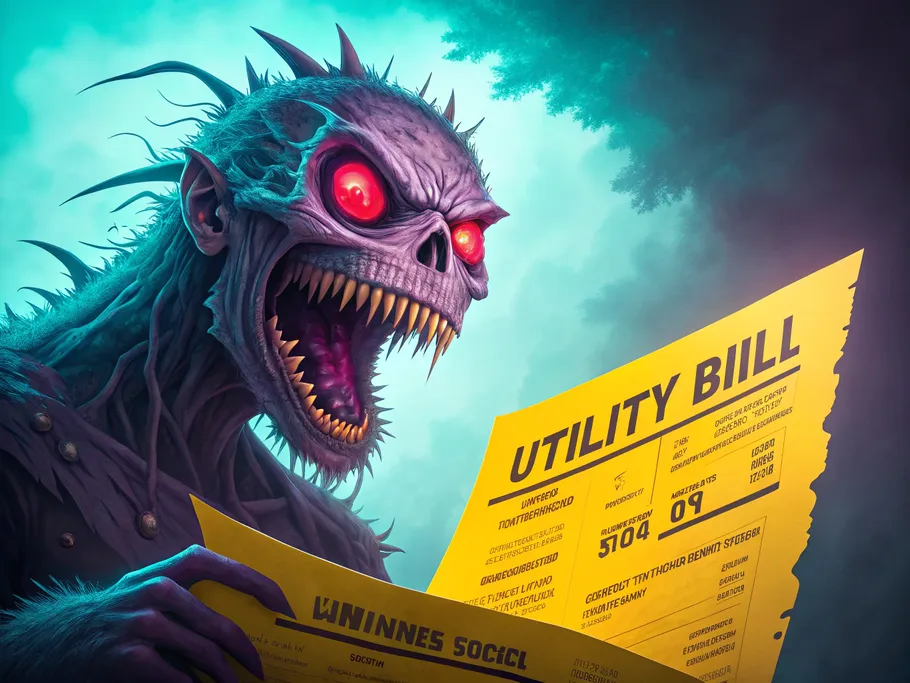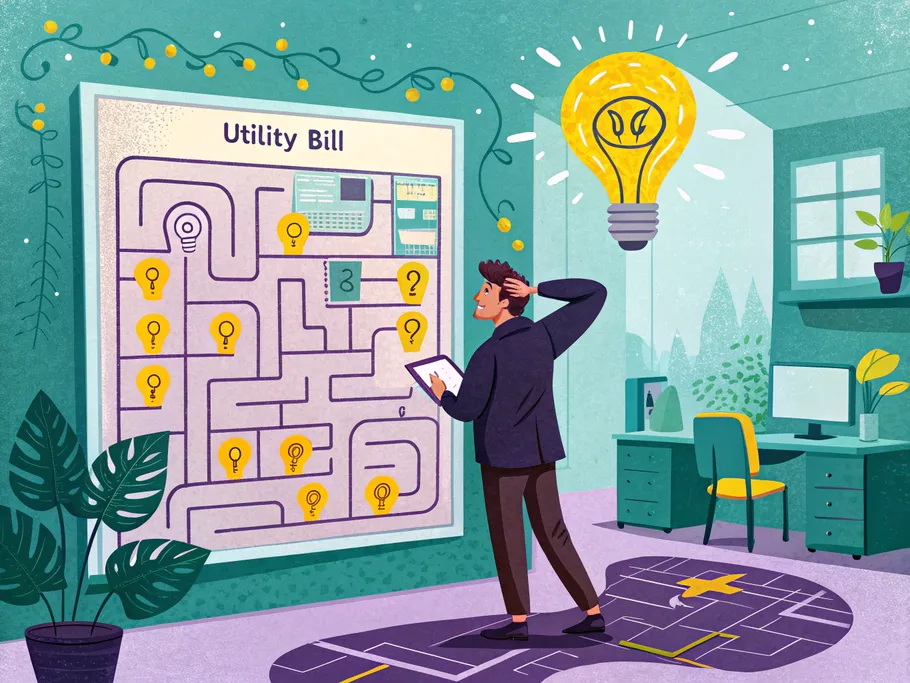Let’s be real—nobody wakes up excited to pay bills. Unless you’re a utility company, in which case, congrats—you’ve mastered adulting. But for the rest of us, especially if you’re running a business, those pesky bills are as unavoidable as Monday morning traffic.
So, the burning question is: Is utilities payable a debit or a credit? Grab your caffeinated beverage of choice (or something stronger, no judgment here), and let’s unravel this accounting riddle together. We’ll keep it light, sprinkle in some humor, and get you back to more exciting things—like figuring out how to expense that “team-building” trip to the Bahamas.
Utilities Payable, Debits, and Credits Explained
Before we dive into the nitty-gritty, let’s make sure we’re all speaking the same language. Think of this as Accounting 101, but without the textbook-induced nap. We’ll break down utilities payable, debits, and credits in plain English. Ready? Let’s get this accounting party started!

What Is Utilities Payable?
Imagine utilities payable as that stack of unopened bills sitting ominously on your kitchen counter. You’ve enjoyed the sweet benefits of electricity, water, and internet (hello, Netflix binges), but you haven’t paid for them yet. In accounting terms, utilities payable is a current liability account that records the amounts you owe to service providers for utilities you’ve already used but haven’t paid for.
We’re talking about:
- Electricity to keep those lights on when inspiration strikes at 2 AM
- Water, because staying hydrated is key (and so is that office coffee machine)
- Gas for heating—nobody likes working in a freezer
- Internet, so you can stream cat videos… I mean, conduct important market research
- Phone services to call your mom and reassure her you’re eating well
Since you’ve already consumed these services, the unpaid amounts hang out on your balance sheet like that one friend who always “forgets” their wallet at dinner. Recording these amounts accurately keeps your financial statements in check and prevents any surprise visits from the utility grim reaper.
Related: Utilities Expense Debit or Credit?
So, Is Utilities Payable a Debit or a Credit?
Drumroll, please… 🎉
Utilities payable is a credit.
Since it’s a liability account (meaning you owe money), it naturally carries a credit balance. When you receive a utility bill but haven’t paid it yet, you credit utilities payable to show that your liabilities have increased. It’s like adding another IOU to your “I’ll deal with it later” pile.
When you finally muster up the courage (and cash) to pay that bill, you debit utilities payable to decrease the liability because you no longer owe that amount. It’s the financial equivalent of crossing something off your to-do list—satisfying, isn’t it?
Recording Utilities Payable: Debits and Credits in Action
Time to roll up our sleeves and see these debits and credits in action. Whether you’re jotting this down in a trusty ledger or battling with accounting software that seems to have a mind of its own, recording utilities payable correctly is crucial. Mess it up, and your financial statements might resemble a Jackson Pollock painting—not exactly what auditors are looking for.

Here’s how to handle the utilities payable journal entries like a pro.
When You Receive the Utility Bill (But Haven’t Paid Yet)
You’ve enjoyed all the comforts of modern business life—electricity, water, high-speed internet to watch yet another webinar on productivity hacks. Now, the bill has arrived, and it’s time to record it:
| Account | Debit | Credit |
|---|---|---|
| Utilities Expense | $X | |
| Utilities Payable | $X |
Breaking it down:
- Utilities Expense (Debit): You’re increasing your expenses because you’ve incurred a cost. Think of it as acknowledging that yes, those office lights didn’t power themselves.
- Utilities Payable (Credit): You’re increasing your liabilities because you now owe money. It’s like adding a reminder note to pay up before things get awkward.
When You Pay the Utility Bill
Good news—you’ve decided to adult today and pay that utility bill before they start sending you love letters with red ink. Here’s how you record the payment:
| Account | Debit | Credit |
|---|---|---|
| Utilities Payable | $X | |
| Cash | $X |
Here’s what’s happening:
- Utilities Payable (Debit): You’re decreasing the liability because you’ve paid off what you owe. That lingering debt? Gone.
- Cash (Credit): You’re decreasing your cash asset because money has left your account. Farewell, dear dollars—you served us well.
Example Journal Entries: Putting It All Together
Let’s make this even clearer with an example. Suppose your company, “Startup Dreams Co.,” racks up $1,000 worth of electricity in September, but the bill isn’t due until October.
Recording the Bill in September
You need to acknowledge that you’ve used the electricity and owe money for it:
| Account | Debit | Credit |
|---|---|---|
| Utilities Expense | $1,000 | |
| Utilities Payable | $1,000 |
What’s happening here?
- Utilities Expense (Debit): Increases your expenses for the period. You’ve used the electricity, so it’s time to own up to it.
- Utilities Payable (Credit): Increases your liabilities because you owe this amount. It’s officially on the books now.
Paying the Bill in October
When you pay the bill, here’s how you record the transaction:
| Account | Debit | Credit |
|---|---|---|
| Utilities Payable | $1,000 | |
| Cash | $1,000 |
Breaking it down:
- Utilities Payable (Debit): Decreases the liability because you’ve paid what you owed. That lingering debt? Gone.
- Cash (Credit): Decreases your cash asset since the money has exited your bank account. It hurts a little, but it’s for the greater good.
And just like that, your accounts are balanced, and you can rest easy knowing the utility company won’t be pulling the plug on you anytime soon.
Read more: Common Stock in Balance Sheet
Using Accounts Payable Instead
Some businesses prefer to keep things simple by lumping utilities payable into the broader accounts payable account. If you’re a fan of streamlined charts of accounts (and who isn’t?), this might be your style. Here’s how the journal entries would look:
Recording the Bill Received
| Account | Debit | Credit |
|---|---|---|
| Utilities Expense | $1,000 | |
| Accounts Payable | $1,000 |
When You Pay the Bill
| Account | Debit | Credit |
|---|---|---|
| Accounts Payable | $1,000 | |
| Cash | $1,000 |
The concept is the same; you’re just using a different account name. The key is consistency—pick a method and stick with it so your financial statements don’t end up looking like a choose-your-own-adventure novel.
Read more: Is Purchase Debit or a Credit?
Takeaways

- Utilities payable is a current liability account representing amounts owed to utility service providers for services you’ve already used but haven’t paid for yet.
- In accounting, utilities payable increases by credit because it increases your liabilities when you incur utility expenses that are unpaid.
- Accurate recording of utilities payable ensures your financial statements are balanced and reflective of your company’s true financial position.
- Utilities Payable: Amounts you owe (liabilities)
- Utilities Expense: Amounts you’ve incurred (expenses)
- Some companies use accounts payable instead of utilities payable to record amounts owed to suppliers and service providers. Either method works as long as you’re consistent.
- Using the double-entry accounting system keeps your books balanced and makes your accountant (or future accountant) very happy. And who doesn’t love a happy accountant?
